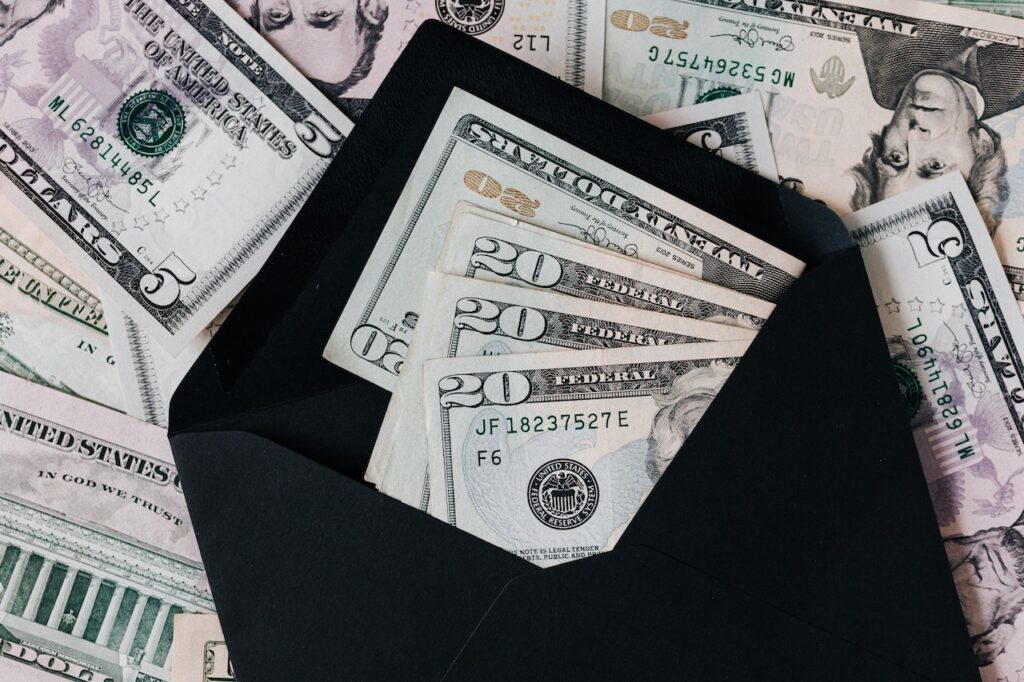Saving money consistently is one of the best things you can do for your financial future. Whether you’re saving for an emergency fund, retirement, or a big purchase, putting away a portion of your income ensures you’ll have money available when you need it most.
Making saving a priority takes dedication and discipline, but it doesn’t have to be complicated. With some simple strategies, you can kickstart your savings this year and set yourself up for long-term financial success.
Key Takeaways on Saving More This Year
- Review spending habits and establish S.M.A.R.T. savings goals
- Automate transfers from checking to savings accounts
- Follow the 50/30/20 rule to direct more money towards savings
- Reduce fixed expenses to maximize savings contributions
- Generate side income solely for savings purposes
- Save your tax refund rather than spend it
- Take full advantage of employer retirement plans and benefits
- Build positive momentum by watching account balances grow

Review Your Spending and Set Savings Goals
The first step to ramping up your savings is understanding where your money is going each month. Review 3-6 months of bank and credit card statements to categorize your spending. Look for areas where you tend to overspend, such as dining out, entertainment, shopping, etc. Identify any subscriptions or memberships you can cancel to free up money in your budget.
Once you have a clear picture of your spending habits, set specific, measurable savings goals for the year. Be sure to make your goals S.M.A.R.T. – Specific, Measurable, Achievable, Relevant, and Time-bound. Examples could include:
- Save $2,000 for an emergency fund by December 31st
- Save $500/month for a down payment on a house
- Save $50/month for a vacation fund
Knowing exactly what you’re saving towards will keep you focused and motivated.
Automate Your Savings
The easiest way to save without thinking about it is by automating your contributions. Set up automatic transfers from your checking account to your savings and investment accounts.
Ideally, savings should be transferred as soon as you receive your paycheck, before you have a chance to spend it elsewhere. Out of sight, out of mind.
Aim to save at least 10-15% of your income if your goal is retirement. Even small amounts add up over time.
For other savings goals like emergencies or vacations, save whatever amounts make sense for your budget. The key is paying yourself first before spending on non-essentials.
Use the 50/30/20 Budget Rule
The 50/30/20 budget rule is an easy framework to prioritize spending and saving each month. Here’s how it works:
- 50% of after-tax income goes towards needs – housing, utilities, insurance, groceries, transportation.
- 30% goes towards wants – dining out, hobbies, shopping, travel.
- 20% goes to debt payments and savings.
This breakdown ensures your needs and savings are covered before spending on wants. If you consistently save 20% of your income, your savings will grow exponentially over time.
Downsize Fixed Expenses
Major fixed expenses like housing, car payments, and insurance eat up a big chunk of your budget. Look for ways to cut back on fixed costs to free up more money for savings.
- Consider downsizing your housing by getting a roommate, moving to a less expensive area, or living in a smaller space.
- Refinance any loans with high interest rates. Even a 0.5-1% rate reduction can save thousands over the life of a loan.
- Raise deductibles on insurance plans or shop around for cheaper coverage.
- Call service providers to negotiate cheaper rates on cable/internet/cell phone plans.
Every dollar you can trim from your fixed expenses is a dollar you can redirect towards savings. It adds up quickly.
Earn Side Income
Bringing in additional income from side hustles or a part-time job can give your savings a significant boost. Use that extra cash just for savings rather than absorbing it into your regular spending.
Examples of lucrative side hustles include:
- Freelance work in your field of expertise
- Driving for a rideshare or delivery company
- Starting a dropshipping business online
- Monetizing a hobby, skill or talent
Even earning an extra $500/month could add $6,000 or more to your savings if dedicated specifically for that purpose.
Save Your Tax Refund
For most people, receiving a tax refund each year provides an opportunity for a big savings deposit. Rather than seeing your refund as free money to spend, decide in advance to save at least a portion, if not all of it.
You can split your refund multiple ways – funding an IRA, establishing an emergency fund, or putting it towards other financial goals.
Be sure to update your tax withholdings if necessary so you get as close as possible to breaking even at tax time. Owing taxes means you received more money throughout the year that could have been saved or invested.
Take Advantage of Employer Savings Benefits
If your employer offers matching 401k contributions, sign up and contribute enough to get the full match. This is free money towards retirement you don’t want to miss out on.
Also enroll in flexible spending accounts (FSAs) or health savings accounts (HSAs) to save pre-tax dollars that can be used for medical expenses.
Check if your company offers an employee stock purchase plan (ESPP) with purchase discounts – another great way to invest on a regular schedule while saving money.
Build Savings Momentum
Forming consistent savings habits is key to accumulating wealth over time. As your savings grow and compound, it will motivate you to save even more.
Watching your account balances rise by making regular contributions will give you a sense of financial security. It reinforces positive behaviors and makes it easier to stay disciplined.
Soon you’ll be looking for new ways to free up money in your budget for additional savings. Small amounts saved regularly add up to huge differences over months and years.
The more you save, the easier it becomes. Use that momentum to push your savings into overdrive this year.
Frequently Asked Questions About Saving Money
How much should I have in savings?
A good emergency fund is 3-6 months of living expenses. For retirement, aim to save at least 15% of your income annually. Determine specific savings targets based on your financial goals and timeline.
What percentage of my income should I save?
Ideally, save at least 10-15% of your gross income as a baseline. Increase that percentage as your income and expenses allow. Consistently saving 20% or more can lead to substantial wealth over time.
Where is the best place to keep savings?
Keep emergency and short-term savings in an FDIC-insured savings account. Invest long-term retirement savings in diversified stocks, bonds, and mutual funds. Consider CDs for fixed interest rates over 3-5 year time horizons.
How can I save money on a low income?
Focus on the essentials, reduce fixed costs, and supplement with side income. Build an emergency fund first before aggressive retirement savings. Take advantage of social programs and benefits available to you.
How do I stay motivated to save consistently?
Automate transfers to set-it-and-forget-it. Watch account balances grow over time. Set milestones and celebrate when you reach them. Remind yourself of future goals and how savings will allow you to achieve them.
What if I have credit card debt – should I still save?
Focus on paying down high-interest debt first before prioritizing savings. However, a small emergency fund should still be established to avoid further debt. Once debts are paid off, divert those payments straight to savings.
Saving more money is a habit gained through commitment and discipline. By following these tips, you can make saving a priority, meet financial goals faster, and build lasting wealth and security.
The key is consistency over time – small amounts saved regularly add up to big differences. Take the first step by reviewing your spending and setting up automatic savings transfers today. Your future self will thank you.

